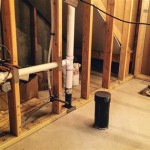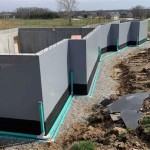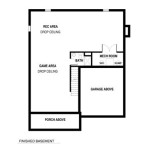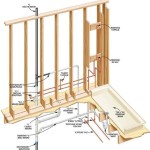Essential Aspects of Basement Bathroom Plumbing Venting Options
Establishing a functioning plumbing system in a basement bathroom necessitates meticulous attention to various factors, one crucial aspect being proper ventilation. Basement bathrooms, often characterized by their limited air circulation, demand well-conceived venting systems to prevent unpleasant odors, harmful gas accumulation, and structural damage.
Plumbing vent systems for basement bathrooms primarily serve two purposes: expelling sewer gases and ensuring efficient drainage. Sewer gases, released when wastewater flows through drains, contain hazardous gases such as methane and hydrogen sulfide, which can pose health risks and cause corrosion within the plumbing system. A well-designed vent system channels these gases outdoors, preventing their accumulation in enclosed spaces.
Equally important is the role of vents in maintaining proper drainage. A vent allows air to enter the drainage system, breaking the suction created by the flowing water. This prevents fixtures from siphoning excess water, ensuring smooth drainage and eliminating the risk of clogs and backups.
When selecting a plumbing vent system for your basement bathroom, several options are available, each with its unique advantages and considerations:
Wet Venting
Wet venting utilizes the drainpipes of fixtures to serve as vents for other fixtures. This method requires careful planning to ensure that the drainpipes have sufficient capacity to handle both drainage and venting functions. While wet venting can be cost-effective, it may not be suitable for complex plumbing systems or situations where fixtures are located far apart.
Dry Venting
Dry venting involves installing separate pipes dedicated solely to venting. These pipes are connected to the drainpipes of fixtures and extend vertically through the roof. Dry venting offers greater flexibility and can accommodate complex plumbing layouts. However, it requires additional materials and installation labor, which may increase the overall cost.
Loop Venting
Loop venting is a combination of wet and dry venting. It involves connecting the drainpipes of fixtures in a loop configuration, with a dedicated vent pipe installed at the highest point of the loop. This method provides efficient venting while minimizing the number of vent pipes required. Loop venting is suitable for situations where fixtures are located close together.
Choosing the Right Option
The choice of plumbing vent system for your basement bathroom depends on various factors, including the layout of the plumbing system, the number and location of fixtures, and the available space. It's recommended to consult with a qualified plumber to determine the most suitable venting solution that meets your specific needs and ensures a well-functioning and safe plumbing system.
In conclusion, proper ventilation is paramount for maintaining a healthy and functional basement bathroom. By understanding the available venting options and selecting the most appropriate solution for your specific installation, you can effectively prevent unpleasant odors, harmful gas accumulation, and drainage issues, ensuring a comfortable and worry-free bathroom experience.
How To Plumb A Basement Bathroom Diy Family Handyman
Venting A Basement Toilet Jlc Online

Vent Options For Plumbing Drains Fine Homebuilding

Pin On Home Decor Basement

Vent Options For Plumbing Drains Fine Homebuilding

Basement Bathroom Plumbing Planning For A Below Grade Lavatory

How To Vent Plumbing In A Basement Bathroom Majestic Small Remodel Shower Seminole Fl Pinellas County

Vent Options For Plumbing Drains Fine Homebuilding

How Do I Vent The Plumbing For My Basement Bathroom Home Improvement Stack Exchange
Does Every Toilet Need A Vent Pipe Quora
See Also








